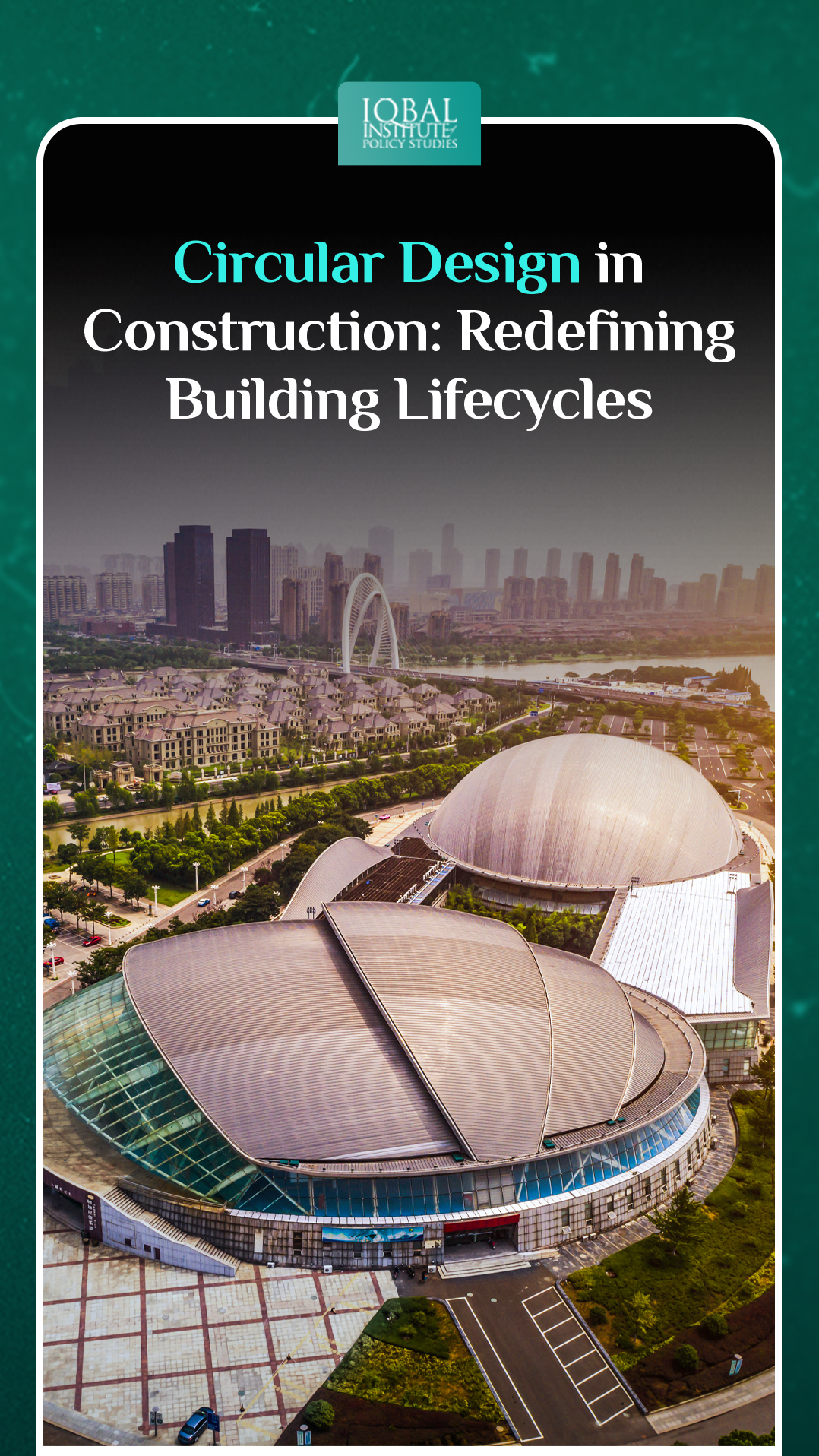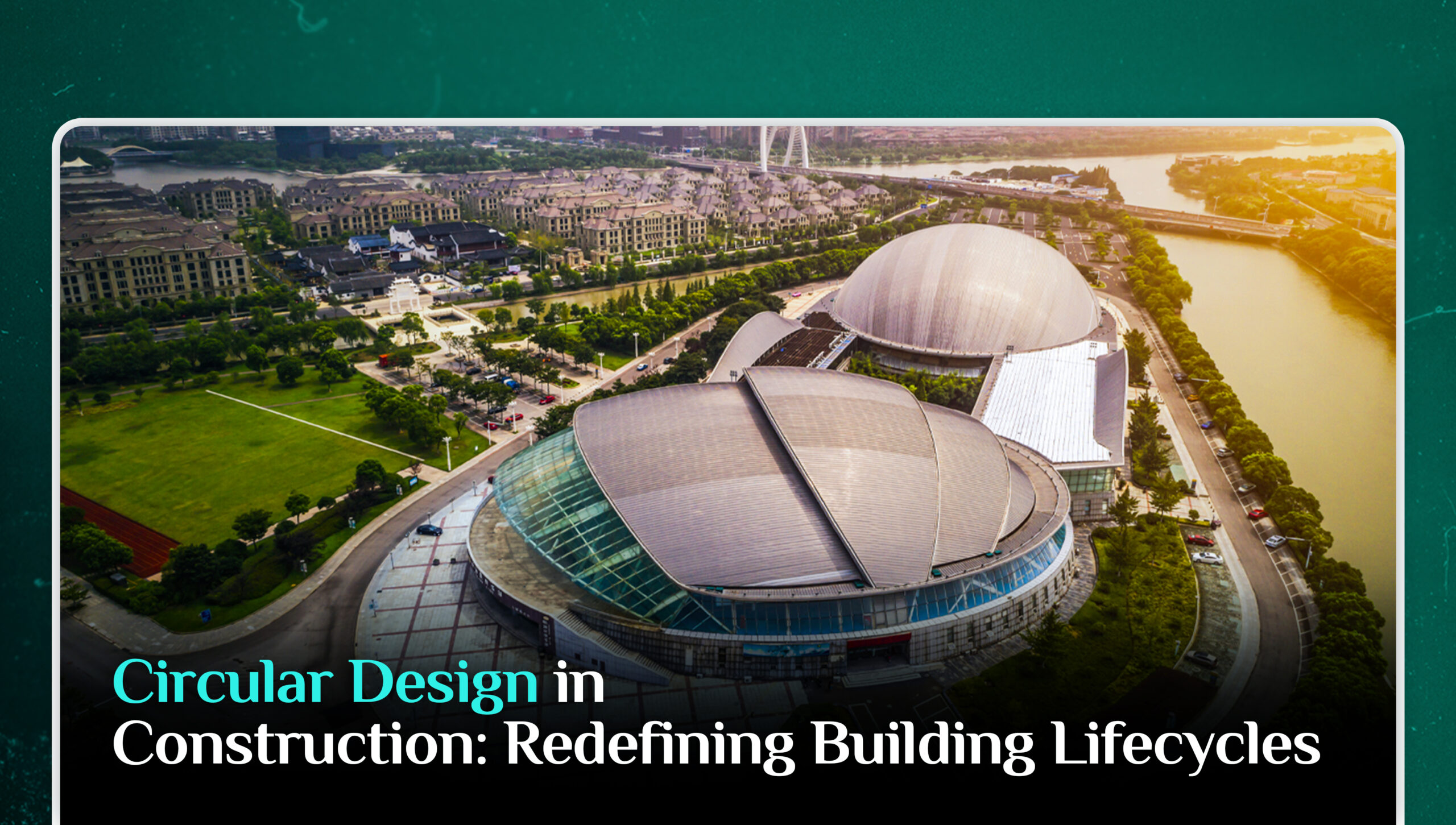The construction industry has long been associated with linear processes, where resources are extracted, used to build structures, and eventually discarded as waste. However, in recent years, there has been a paradigm shift towards circular design in construction, a sustainable approach that redefines building lifecycles. Circular design aims to minimize waste, reduce environmental impact, and promote long-term resilience by adopting principles inspired by nature’s cycles.
Understanding Circular Design
Circular design is a holistic approach that challenges the traditional linear model of “take, make, and dispose.” It draws inspiration from the circular systems found in nature, where waste is virtually non-existent, and materials are continuously reused and recycled. In the context of construction, circular design involves designing buildings and infrastructure with the intent of creating a closed-loop system where materials are reused, refurbished, and recycled throughout their lifecycle.
Key Principles of Circular Design in Construction
Material Selection and Durability
Circular design begins with the careful selection of materials. Emphasis is placed on choosing materials that are durable, recyclable, and have a lower environmental impact. High-quality, long-lasting materials reduce the need for frequent replacements and contribute to the overall sustainability of the building.
Modularity and Flexibility
Circular construction promotes modularity, allowing for easy disassembly and reassembly of building components. This flexibility facilitates the reuse of materials in different projects, extending their lifespan and reducing the demand for new resources. Modular design also supports adaptive reuse, enabling buildings to evolve with changing needs.
Resource Recovery and Recycling
A core tenet of circular design is the integration of resource recovery and recycling systems. Materials and components are designed to be easily disassembled and separated for recycling. This approach minimizes the amount of waste sent to landfills and conserves valuable resources that can be reintroduced into the manufacturing process.
Design for Deconstruction
Circular design places importance on designing buildings for easy deconstruction. This involves considering how materials can be efficiently dismantled and repurposed at the end of a building’s life. Deconstruction-focused design encourages the salvaging of valuable components and reduces the environmental impact associated with demolition.
Digital Technologies and Data Management
The use of digital technologies, such as Building Information Modeling (BIM), plays a crucial role in circular design. BIM allows for the creation of a digital twin of the building, enabling efficient management of materials and components throughout their lifecycle. Real-time data can inform decisions on maintenance, upgrades, and eventual decommissioning.
Case Studies
The Edge, Amsterdam
The Edge, a sustainable office building in Amsterdam, serves as a prime example of circular design. It incorporates materials with high recycled content, utilizes rainwater harvesting, and features a modular design that allows for easy reconfiguration of interior spaces.
Copenhagen’s Bicycle Snake
The Bicycle Snake, a cycling bridge in Copenhagen, showcases the principles of circular design through its modular construction. The bridge is made from recycled materials, and its modular components can be easily disassembled and reused in other infrastructure projects.
Challenges in Adopting Circular Design in Construction
Mindset and Cultural Shift
One of the primary challenges in implementing circular design in construction is the need for a significant mindset shift across the industry. Traditional practices are deeply ingrained, and stakeholders may be resistant to change. Convincing professionals to embrace circular design principles and invest in sustainable alternatives can be a slow and challenging process.
Lack of Standardization
The absence of standardized practices and guidelines for circular design in construction poses a significant challenge. Without clear benchmarks and industry standards, architects, engineers, and builders may struggle to implement consistent circular design strategies. Standardization is crucial for creating a unified approach that facilitates widespread adoption.
Supply Chain Complexity
The construction supply chain is complex, involving numerous suppliers, manufacturers, and distributors. Coordinating efforts to source sustainable materials, ensure responsible extraction practices, and track the origin of materials can be challenging. Establishing transparency and accountability throughout the supply chain is essential for the success of circular design initiatives.
Initial Cost Barriers
While circular design can lead to long-term cost savings, the initial investment required can be a barrier to adoption. Sustainable materials and construction methods may have higher upfront costs, deterring some stakeholders who prioritize short-term financial considerations. Overcoming this hurdle involves educating stakeholders about the long-term economic benefits of circular practices.
Regulatory and Policy Issues
Existing regulations and policies in the construction industry often do not explicitly support or incentivize circular design practices. Governments and regulatory bodies need to update and create policies that encourage the adoption of sustainable construction methods. In the absence of supportive policies, circular design may struggle to gain traction.
Opportunities in Embracing Circular Design in Construction
Cost Savings Over the Lifecycle
Although circular design may require higher initial investments, it often results in significant cost savings over the lifecycle of a building. Reduced maintenance costs, longer-lasting materials, and efficient use of resources contribute to a more financially sustainable model in the long run.
Innovation and Technological Advancements
The pursuit of circular design has sparked innovation in materials, construction methods, and technologies. The development of advanced materials, digital tools for monitoring building performance, and smart construction practices presents opportunities for the industry to evolve and stay competitive.
Market Demand for Sustainability
The growing awareness of environmental issues and climate change has led to increased market demand for sustainable and eco-friendly construction. Adopting circular design practices positions construction firms to meet this demand, attract environmentally conscious clients, and differentiate themselves in a competitive market.
New Business Models
Circular design opens the door to new business models, such as leasing and product-as-a-service arrangements. Instead of selling construction materials outright, companies can lease them, encouraging the return and reuse of materials at the end of their life. This shift towards a service-based model aligns with circular principles.
Community and Stakeholder Engagement
Circular design fosters community engagement by promoting local sourcing of materials, creating job opportunities in the recycling sector, and enhancing the overall quality of the built environment. Engaging stakeholders in the circular design process can build a sense of ownership and responsibility for sustainable construction practices.
Conclusion
Circular design in construction represents a fundamental shift towards a more sustainable and resilient built environment. By redefining building lifecycles, this approach addresses the pressing challenges of resource depletion, environmental degradation, and waste generation. As the construction industry increasingly embraces circular design principles, we move closer to a future where buildings contribute to, rather than detract from, the health of the planet.
This article is written by Radma Nouman. Radma is a research analyst at the Iqbal Institute of Policy Studies (IIPS).



Leave a Reply